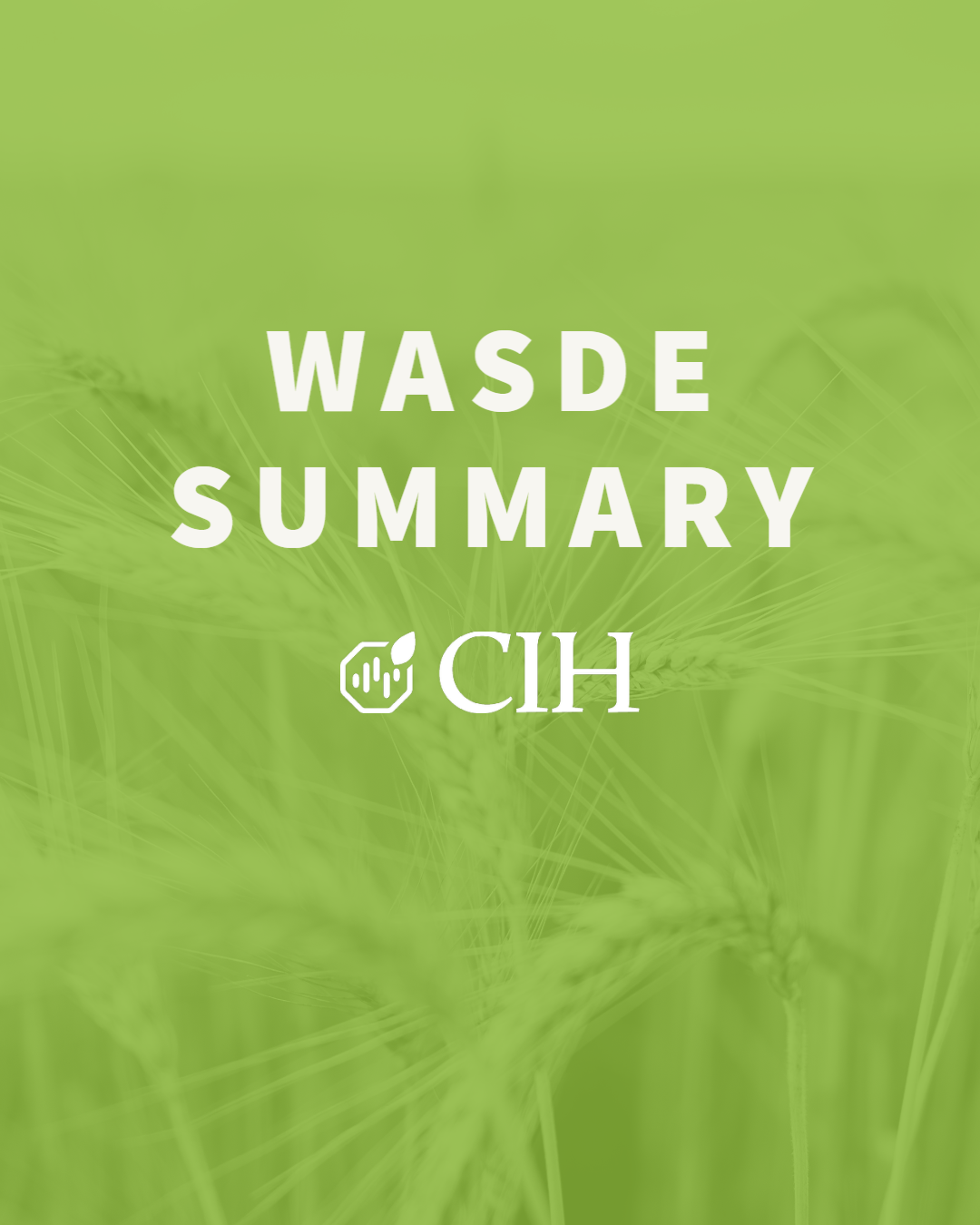
November 08, 2024
Today’s WASDE report was relatively bullish for soybeans based on dramatic yield cuts, friendly corn for similar reasons, and relatively neutral for the wheat market. This marked the last yield estimate of 2024 for corn and soybeans before final yields are released in January’s crop report. Market attention will remain on South American weather and the impact of a developing weak La Niña on prolonged dryness in Argentina and southern Brazil.
Corn
For corn, the domestic 2024/25 balance sheet called for lower production and ending stocks. Corn production was lowered slightly to 15.1 billion bushels on a 0.7 bushel yield reduction. Pegged at 183.1 bushels per acre, the yield estimate was slightly below the average analysts’ pre-report estimate of 183.7 bushels per acre but within the range of estimates (182.5 to 185.0 range). Total use was unchanged from last month despite strong export and ethanol grind figures. Corn ending stocks were lowered to 1.9 billion bushels, nearly identical to the average analysts’ pre-report estimate of 1.921 billion bushels. Global corn production was increased while ending stocks were lowered. Global corn ending stocks were lowered by 2.4 million metric tons to 304.1 million. This was below the average pre-report estimate of 305.9 million and near the lower end of the range of estimates (304.0 to 308.5 million).
Outstanding corn export sales continue to move higher:

Ethanol production remains robust, marked 3-month high last week:

Corn stocks-to-use ratio forecast to fall for 5th straight month:

Soybeans
For soybeans, the domestic 2024/25 balance sheet called for lower production, exports, crush, and ending stocks. Soybean production was lowered by 121 million bushels to 4.5 billion. Yields were reduced to 51.7 bushels per acre, with large reductions in Iowa, Illinois, and Minnesota. This was below the average pre-report estimate of 52.8 bushels per acre and below the lower end of the range of estimates (52.0 to 53.8 range). Exports were lowered on the slow pace of sales to date while crush was lowered by 15 million bushels. Soybean ending stocks were lowered 80 million bushels to 470 million bushels. This was also below the average pre-report estimate of 535 million bushels and below the lower end of the range of estimates (480 to 602 million range). The global soybean balance sheet also called for lower production and lower ending stocks. Production was lowered mostly on reduction in the U.S. and India. Export forecasts were increased for Brazil and Canada. Global soybean ending stocks were reduced by 2.9 million metric tons to 131.7 million on lower stocks in the U.S., Brazil, and Argentina. This was below the average pre-report estimate of 134.0 million metric tons and near the lower end of the range of estimates (131.5 to 135.0 million).
Soybean outstanding sales moving seasonally lower as global attention shifts toward booking South American beans:

Soybean yield cut of 1.4 bushels per acre marked the largest November WASDE reduction over the past decade:

Wheat
For wheat, the domestic 2024/25 balance sheet called for slightly larger supplies, use, and ending stocks. Supplies were increased on a slight uptick in Hard Red Spring wheat imports. Domestic food use was increased due to the latest Flour Milling Products report. Exports were unchanged, leading to ending stocks ticking higher by 3 million bushels to 815 million. This was nearly identical to the average pre-report estimate of 812 million bushels and, if realized, would be an increase of 17 percent from last year. The global balance sheet called for larger supplies, greater consumption, and lower ending stocks. Higher production in Kazakhstan is expected to more than offset reductions in Argentina, Brazil, Russia, and the EU. Decreases in ending stocks in Argentina, China, and Brazil slightly lowered global ending stocks from last month to 257.6 million metric tons. This was a big higher than the average pre-report estimate of 256.8 million metric tons but within the range of estimates (255.4 to 258.0 million range).
All wheat outstanding export sales moving higher, remain behind average for this point in the marketing year:

All wheat ending stocks pegged to increase for 2nd straight year:
